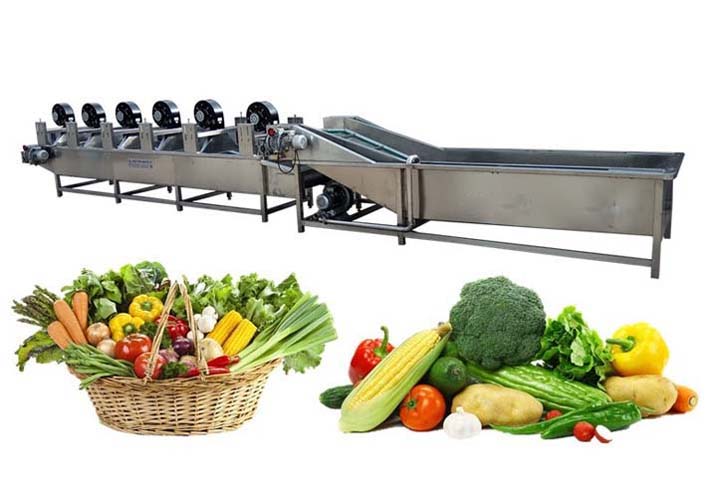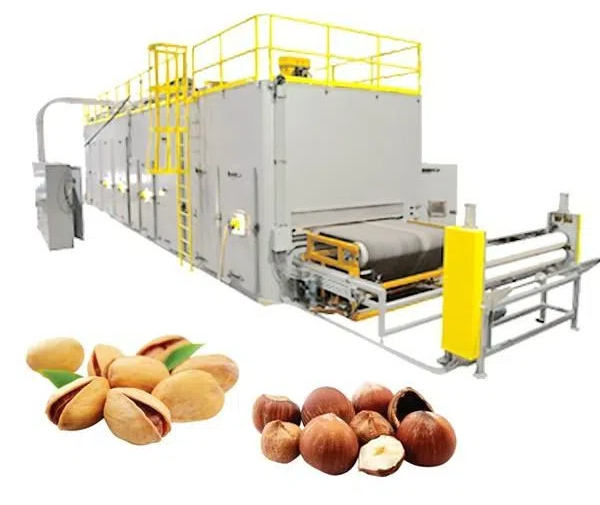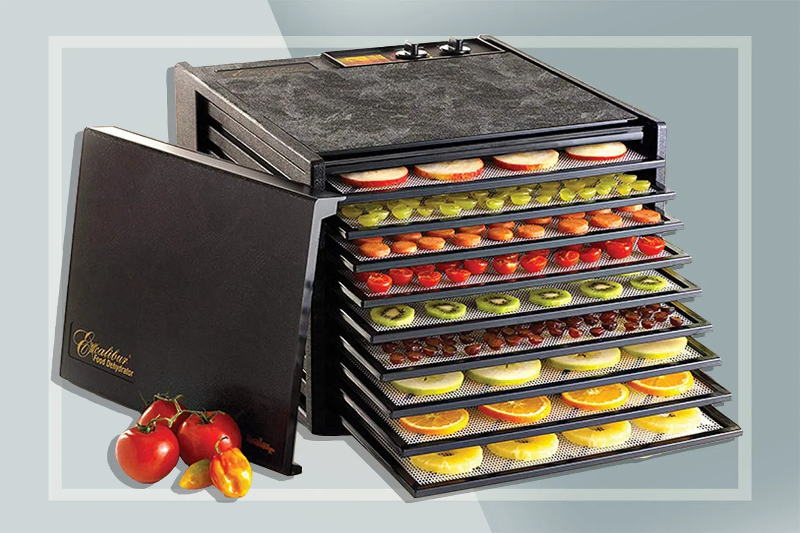
Content Menu
● Introduction
● Understanding Vegetable and Fruit Dryer Machines
>> How Vegetable and Fruit Dryer Machines Work
● Types of Vegetable and Fruit Dryer Machines
>> 1. Home Vegetable Dehydrators
>> 2. Commercial Food Dryers
>> 3. Industrial Fruit Dryers
>> 4. Multi-functional Food Dryers
● Benefits of Using a Vegetable and Fruit Dryer Machine
>> 1. Nutrient Preservation
>> 2. Extended Shelf Life
>> 3. Space-Saving Storage
>> 4. Cost-Effective
>> 5. Customization and Control
● Choosing the Right Vegetable and Fruit Dryer Machine
>> 1. Capacity
>> 2. Temperature Control
>> 3. Airflow Design
>> 4. Energy Efficiency
>> 5. Noise Level
>> 6. Additional Features
● Tips for Using Your Vegetable and Fruit Dryer Machine
● Creative Uses for Dried Fruits and Vegetables
● Conclusion
● Frequently Asked Questions
>> 1. How long does it take to dry fruits and vegetables in a dryer machine?
>> 2. Are dried fruits and vegetables as nutritious as fresh ones?
>> 3. Can I dry all types of fruits and vegetables in a dryer machine?
>> 4. How do I clean and maintain my vegetable and fruit dryer machine?
>> 5. Can I use a vegetable and fruit dryer machine for other purposes?
Introduction
In today's fast-paced world, where health-conscious consumers are constantly seeking ways to preserve the nutritional value of their food while extending its shelf life, vegetable and fruit dryer machines have emerged as a game-changing solution. These innovative appliances, also known as food dehydrators, have revolutionized the way we approach food preservation, offering a convenient and efficient method to enjoy our favorite fruits and vegetables year-round.
Understanding Vegetable and Fruit Dryer Machines
A vegetable and fruit dryer machine is a specialized appliance designed to remove moisture from fresh produce, effectively preserving it for extended periods. By carefully controlling temperature and airflow, these machines create an environment that slowly evaporates water content while retaining the essential nutrients, flavors, and colors of the fruits and vegetables.
How Vegetable and Fruit Dryer Machines Work
The process of dehydration in a vegetable and fruit dryer machine is relatively simple yet highly effective. Here's a step-by-step breakdown:
1. Preparation: Fruits and vegetables are washed, peeled (if necessary), and sliced into uniform pieces.
2. Arrangement: The prepared produce is spread evenly on the machine's trays, ensuring proper air circulation.
3. Temperature Control: The dryer is set to the appropriate temperature, typically ranging from 95°F to 165°F (35°C to 74°C), depending on the type of produce.
4. Air Circulation: A fan within the machine circulates warm air around the food, gradually removing moisture.
5. Time: The drying process can take anywhere from a few hours to several days, depending on the food's water content and desired level of dryness.
6. Storage: Once dried, the fruits and vegetables are cooled and stored in airtight containers.
Types of Vegetable and Fruit Dryer Machines
1. Home Vegetable Dehydrators
These compact units are perfect for household use, allowing families to create healthy snacks and preserve small batches of produce. Home vegetable dehydrators often feature stackable trays and adjustable temperature controls, making them versatile and user-friendly.
2. Commercial Food Dryers
Designed for larger-scale operations, commercial food dryers offer increased capacity and more advanced features. These machines are ideal for small businesses, restaurants, or farmers looking to process larger quantities of fruits and vegetables.
3. Industrial Fruit Dryers
Industrial-grade fruit dryers are massive machines capable of processing tons of produce daily. These sophisticated systems often incorporate advanced technologies like vacuum drying or freeze-drying for optimal results.
4. Multi-functional Food Dryers
These versatile machines go beyond just drying fruits and vegetables. They can often be used for making yogurt, proofing bread dough, or even drying herbs and flowers, making them a valuable addition to any kitchen.

Benefits of Using a Vegetable and Fruit Dryer Machine
1. Nutrient Preservation
Unlike other preservation methods that may compromise nutritional value, vegetable and fruit dryer machines help retain most of the vitamins, minerals, and antioxidants present in fresh produce. This makes dried fruits and vegetables a healthy snack option and a great addition to various recipes.
2. Extended Shelf Life
By removing moisture, these machines significantly extend the shelf life of fruits and vegetables. Properly dried and stored produce can last for months or even years, reducing food waste and allowing you to enjoy your favorite fruits and vegetables out of season.
3. Space-Saving Storage
Dried fruits and vegetables take up much less space than their fresh counterparts, making them ideal for those with limited storage capacity. This space-saving aspect is particularly beneficial for people living in small apartments or those who like to stock up on their favorite produce.
4. Cost-Effective
While the initial investment in a vegetable and fruit dryer machine may seem significant, it can lead to substantial savings in the long run. By buying produce in bulk when it's in season and drying it for later use, you can avoid the higher prices of out-of-season fruits and vegetables.
5. Customization and Control
Using a vegetable and fruit dryer machine gives you complete control over the drying process. You can adjust temperature and drying time to achieve your desired texture and flavor, something that's not possible with store-bought dried products.
Choosing the Right Vegetable and Fruit Dryer Machine
When selecting a vegetable and fruit dryer machine, consider the following factors:
1. Capacity
Determine how much produce you plan to dry regularly. This will help you choose between a compact home dehydrator or a larger commercial unit.
2. Temperature Control
Look for machines with adjustable temperature settings to accommodate different types of produce and desired outcomes.
3. Airflow Design
Efficient air circulation is crucial for even drying. Vertical airflow systems are common in home units, while horizontal airflow is often preferred in commercial models.
4. Energy Efficiency
Consider the energy consumption of the machine, especially if you plan to use it frequently. Look for energy-efficient models to keep operating costs low.
5. Noise Level
Some vegetable and fruit dryer machines can be noisy during operation. If this is a concern, look for models designed for quiet operation.
6. Additional Features
Some machines come with extra features like timers, automatic shut-off, or even smart connectivity. Determine which features are important to you and your drying needs.

Tips for Using Your Vegetable and Fruit Dryer Machine
To get the most out of your vegetable and fruit dryer machine, follow these tips:
1. Prepare produce uniformly: Cut fruits and vegetables into evenly sized pieces to ensure consistent drying.
2. Pre-treat when necessary: Some fruits benefit from pre-treatment with lemon juice or ascorbic acid to prevent browning.
3. Rotate trays: For even drying, rotate the trays periodically during the drying process.
4. Start with clean equipment: Always ensure your dryer and trays are clean before use to prevent contamination.
5. Store properly: Once dried, store your fruits and vegetables in airtight containers in a cool, dark place.
6. Experiment: Don't be afraid to try drying different fruits and vegetables or creating unique flavor combinations.
Creative Uses for Dried Fruits and Vegetables
The possibilities are endless when it comes to using dried fruits and vegetables. Here are some ideas to get you started:
1. Healthy snacks: Enjoy dried fruits and vegetables as a nutritious on-the-go snack.
2. Baking: Add dried fruits to cookies, muffins, or bread for extra flavor and nutrition.
3. Trail mix: Create your own custom trail mix with a variety of dried fruits, nuts, and seeds.
4. Soups and stews: Rehydrate dried vegetables to add to soups, stews, and casseroles.
5. Fruit leathers: Use your vegetable and fruit dryer machine to make homemade fruit leathers for a fun, healthy treat.
6. Powders: Grind dried fruits or vegetables into powders for use in smoothies, seasonings, or as natural food coloring.
Conclusion
Vegetable and fruit dryer machines have revolutionized the way we preserve and enjoy nature's bounty. By investing in one of these versatile appliances, you can unlock a world of culinary possibilities while ensuring that you always have access to nutritious, flavorful dried fruits and vegetables. Whether you're a health-conscious individual, a busy parent, or a food enthusiast, a vegetable and fruit dryer machine is a valuable addition to any kitchen, offering convenience, cost savings, and endless creative opportunities.

Frequently Asked Questions
1. How long does it take to dry fruits and vegetables in a dryer machine?
Answer: The drying time can vary depending on the type of produce, its water content, and the desired level of dryness. Generally, fruits can take anywhere from 6 to 36 hours, while vegetables might take 4 to 14 hours. Factors like slice thickness and the efficiency of your vegetable and fruit dryer machine also play a role in determining drying time.
2. Are dried fruits and vegetables as nutritious as fresh ones?
Answer: While some nutrients may be lost during the drying process, properly dried fruits and vegetables retain most of their nutritional value. In fact, the concentration of certain nutrients can increase as water is removed. However, it's important to note that the calorie density also increases, so portion control is key when consuming dried produce.
3. Can I dry all types of fruits and vegetables in a dryer machine?
Answer: Most fruits and vegetables can be dried successfully in a vegetable and fruit dryer machine. However, some produce with very high water content, like watermelon, may not yield satisfactory results. It's best to consult your machine's manual or a reliable food dehydration guide for specific recommendations on different types of produce.
4. How do I clean and maintain my vegetable and fruit dryer machine?
Answer: Regular cleaning is essential for maintaining your dryer machine. After each use, wash the trays with warm, soapy water and dry them thoroughly. Wipe down the interior of the machine with a damp cloth. For deeper cleaning, consult your machine's manual, as some parts may be dishwasher safe. Always ensure the machine is unplugged before cleaning.
5. Can I use a vegetable and fruit dryer machine for other purposes?
Answer: Yes, many vegetable and fruit dryer machines are versatile and can be used for various purposes. Depending on the model, you might be able to dry herbs, make jerky, create fruit leathers, dry flowers for crafts, or even make yogurt. Always check your machine's capabilities and follow the manufacturer's guidelines for different applications.












